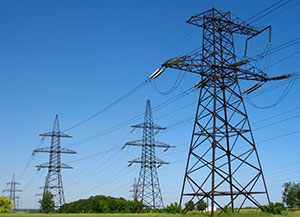 An overhead power line is an engineering structure used to transmit electricity through wires located in the open air and attached to special supports or structural parts of structures (bridges, overpasses, etc.) by means of insulators and fittings.
An overhead power line is an engineering structure used to transmit electricity through wires located in the open air and attached to special supports or structural parts of structures (bridges, overpasses, etc.) by means of insulators and fittings.
Insulators – porcelain or glass products – serve to insulate the wire from the support body and the ground.
Insulators are differentiated by design and method of attachment into pins and suspended insulators. Pin insulators are fixed on pins or hooks. Pin insulators also include rod-type insulators with flanges, which are bolted rather than pinned to the support beam.
This brochure covers information concerning the installation of power line conductors attached to pin-type insulators.
Such power lines include lines with voltages from 0.5 to 35 kV, mainly for agricultural applications.
Lines with voltage of 35 kV are installed, along with pin-type insulators, with the help of suspension insulators.
If pin-type insulators can be used under load conditions, they should be preferred, as they have an advantage over suspension-type insulators both in terms of economics and ease of installation of conductors. With pin-type insulators, no special fittings are required to secure the wires. On those lines where the loads on the insulators of anchor supports exceed the strength of pin insulators, it is necessary to switch to mixed suspension of wires, in which pin insulators are used on intermediate supports and suspension insulators on anchor supports.
Since electric power is transmitted mainly by three-phase current, each transmission line has three wires corresponding to the number of phases. The wires carrying the current must be insulated from the body of the support and kept at a safe distance from the ground and various structures.

